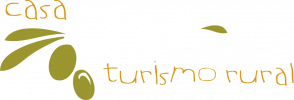Activities
CANYON DESCENT
More than 60 sports cannons, of different levels and for all audiences. Canyons to begin with such as the Peonera, Oscuros de Bálces, Formiga or the Vero River Canyon, others for the most expert such as the Máscun Superior, Black Gorgas, Gorgonchón Ravine…. make Guara the best place in the world to practice this sport. "Casa Oliva", offers contact with qualified professional guides. www.guiasdeguara.com
CLIMBING
Guara has numerous rock formations, very attractive for climbing. There are several via ferratas for all levels. - Via ferrata Espolón de la Virgen (Rodellar-Máscun) - Via ferrata Pedruel bridge (Rodellar) - Via ferrata Peñas Juntas (Bierge)
BTT
There are many signposted routes of varying difficulty depending on the unevenness and the kilometers. All of them can be done in two directions, they are circular and many are connected, allowing you to travel long distances throughout the Somontano. Specifically, a route starts from our town, Abiego.
WINE TOURISM
This wine-growing area offers wine tourists, visits to wineries, tasting courses and tasting of all the Somontano wines, the first weekend of August, at the “Wine Festival”. We can visit: Bodegas Osca, Bodegas Viñas del Vero, Bodegas Alodía, Enate, Pyrenees ... etc
OLEO-TOURISM
These lands offer a top quality oil, made from varieties such as "alquezrana", "negral" or "verdeña", which are the liquid gold of Guara. You can visit the Buera Torno and the Bierge and Costean oil mills.
ORNITHOLOGY
In the Sierra y los Cañones de Guara Natural Park, species such as the bearded vulture, the royal and black kites, the peregrine falcon and the queen of birds, the royal eagle, abound. The vulture dining room in Santa Cilia de Panzano is curious.
ROCK ART
The Río Vero Natural Park integrates more than 60 painted shelters and 20,000 years of rock art, declared a World Heritage Site. The Rock Art Center in Colungo is a reception and information point to start the visit with guides to: Tozal de Mallata, Shelter of Arpán, Covachos de Barfaluy, El Abrigo de Chimiachas.
ROMANESQUE
The Colegiata de Alquézar surprises with the richness and monumentality of the historical and artistic legacy that it treasures. Through a succession of ramps fortified with towers and medieval walls, you enter the college preceded by a Romanesque atrium. You can also visit the hermitage of San Nicolás de Bari in Alberuela, the Church of the Assumption in Peralta de Alcofea, the hermitage of San Martín in Morrano ...
MYCOLOGY
The climatology and orography of the Somontano are very varied, so that in its different habitats countless species develop, especially in spring and autumn.
THE HUNT / FISHING
.Big game hunting, mainly wild boar and roe deer and small partridge hunting, is an attraction for the autumn and winter months. In the Alcanadre sports reserve, common trout fishing is practiced under the catch-and-release mode.
THE PUBLIC FOUNTAIN
with several pipes that is completed with the laundry and water trough. It was built between the late 16th and early 17th centuries, recently restored.
THE COLLEGE SANTA MARIA LA MAYOR
From an old mosque and Arab castle, it became a church and Christian fortress with the reconquest. It is one of the most beautiful and harmonious late rural Gothic buildings, as it is the only one in Somontano with a Latin cross floor plan.
THE FONDOTA DEPOSIT
They are fossilized footprints that were left in the mud 33 million years ago, the herds of now extinct herbivores that inhabited these territories. The tracks they left in the mud were filled with litter, thus protecting themselves from erosion. Later, tectonic movements carried these marks deep into the earth, where great pressures turned the earth to stone.
THE CONVENT OF SAN JOAQUÍN
It hosted a community of Poor Clare nuns, it was also a school and a tanning factory. The highlight is his beautiful oratory. It is equipped with tribunes that open onto the nave between giant pilasters and beautiful moldings.
THE MONUMENT TO THE TWENTIETH CENTURY
This work by the German sculptor Ulrich Rückriem, is located 1 km from the town, in the cabañera. The geometric composition based on 20 pink granite stelae, has as its background and reference the mountains, the holm oak forest and the town of Abiego. The columns are arranged in such a way that you can never count them all.
THE ROMAN BRIDGE
The path along the Tejar ravine leads us to it. The Roman Bridge over the Alcanadre river, of Roman typology, is the work of the Gothic.

